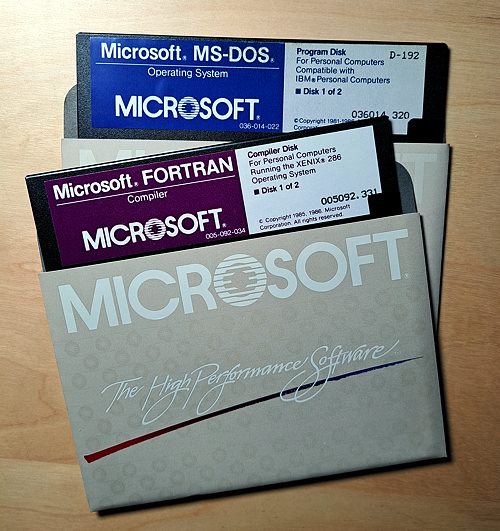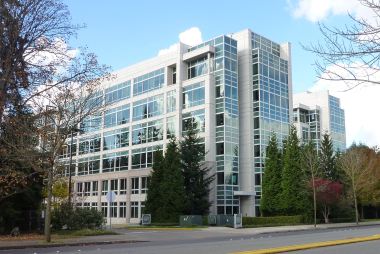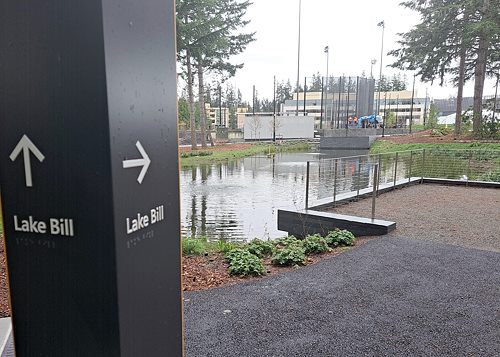Finding Lake Bill
In 1975, Bill Gates and Paul Allen set out with the fairly modest goal of marketing a BASIC compiler for the Altair 8800, one of the earliest personal computers. This led to the founding of Microsoft. Now, 50 years later, Microsoft is one of the largest US technology companies, which today is equivalent to just saying that it is one of the largest companies in the world. My own career, such as it is, has been intertwined with the Microsoft story to a greater and lesser degree over that period.

Microsoft continued to develop compilers throughout the 1980s. I remember using their FORTRAN compiler for PC hardware (actually running a version of Unix). I found the original disks during a recent clearout (note the early version of the logo and meaningless slogan). But Microsoft’s breakthrough product was MS-DOS, an operating system that became the standard in personal computing, and propelled the company to a dominant position in the personal computing industry. The introduction of Windows in 1985 further solidified its influence by offering a user-friendly graphical interface that opened computing to a wider audience. Through the 1990s, Microsoft diversified its offerings, introducing tools like Microsoft Office.
In 1996 it launched a mobile operating system, Windows CE (which eventually morphed into Windows Phone). I loved Windows CE. I was on the beta program and built several products for it. I even took a trip to Microsoft’s Redmond campus (built in 1985), to learn about it from the developers. It was exciting to be at Microsoft’s headquarters and see the unusual X-shaped two-storey buildings arranged in two arrays like the sprites in some primitive video game. These were buildings 1-6 and the slightly later buildings 8-10 (building 7 was never built). They were rendered in great detail in Microsoft Flight Simulator, so they were already familiar. If you looked carefully, you could often see them from the real plane on the approach to Seattle-Tacoma airport.

A small pond between buildings 1, 2, 3, and 4 was nicknamed "Lake Bill" for Bill Gates. As well as being scenic, it was famous for being used for celebrations when projects were completed, with managers (apparently including Gates) being thrown in.

I continued to develop for Windows during the 1990s, although for fairly long spells I was working on Unix, or some version of it. The Microsoft Developer Network was a subscription that came with a booklet of CDs with just about every Microsoft product. The disk pack got larger and larger as the years went by, sometimes accompanied by a newsletter with hints and tips, and a shelf-full of manuals with the API specifications. Eventually they were all replaced with downloads.
In about 2003 I found a lot of the software I had been writing could be replaced with SharePoint, and so I began to focus more on SharePoint Server, first as an application, and later as a development platform. But it was a complex suite of products, and I decided I wanted to really get to the bottom of how it worked, so I enrolled in the Microsoft Certified Master program. This was the pinnacle of certification and was an arduous (and costly) three-week course that took place on the Microsoft campus, which I have written about elsewhere.

By this time the campus had expanded to the other side of Route 520 with the new ‘West’ campus with shops and restaurants and Building 92 with its visitor centre and shop. We were given proper photo badges and were allowed to use the staff shop. We spent most of our time in Building 40 which was still part of the East campus. The original buildings were still there, and you could move between them, although I think Lake Bill was not accessible, or perhaps I just didn’t find it.

In 2018 I was back in Redmond for that year’s MVP Summit, an annual event for individuals whom Microsoft recognises for their technical community contributions. This is a great opportunity to work with the engineers and managers behind Microsoft products, who are normally shielded behind several layers of support staff. By this time Microsoft had doubled down on ‘cloud’ computing, having launched Azure in 2010, along with what was to become Microsoft 365; the cloud version of its business products. There were plans in place to redevelop the ‘old’ East Campus. Buildings 1-9, among others, were scheduled for demolition. They were probably over-engineered, structurally resembling World War II pillboxes with thick, earthquake-proof, reinforced concrete, despite being only two storeys high. This can be seen in the picture above showing the entrance to the carpark of Building 1. By the following year the whole area was cordoned off and the demolition crews were in action. I imagine it wasn’t an easy task.
Looking back over Microsoft’s history you might conclude that there was a degree of good fortune; of being in the right place at the right time. But it takes skill, as well as courage, to achieve that, and the company has done so repeatedly with Microcomputer software, and then GUIs, cloud computing, and now AI. And even on the occasions when the company was caught on the back foot, such as when the Internet and the Web suddenly caught on, or when the same technology exposed us to whole new categories of security risk, they recovered quickly (although not quickly enough to save Windows Phone). Microsoft’s business was built on sturdy foundations, like those first buildings at the Redmond campus.
But no such foundations can survive the shifting sands of technological progress. And so, like any technology company, Microsoft must keep changing, and there’s little room for sentimentality. The older part of the Microsoft campus needed bringing up-to-date, and now the original buildings at Redmond have been demolished. At the MVP Summit in March 2025, I made another visit to Microsoft’s campus and found the building works mostly completed. The area where the original buildings 1-4 once stood was accessible again, mainly sports fields and landscaping. But Lake Bill has survived!

And as far as I can tell it’s in the same position as it was before, supposedly having been scanned with LIDAR before work started. The old buildings have gone, but there are now magnificent new buildings 1-10 on Microsoft’s campus, and for the first time, a building 7. But for those of us who have been on the Microsoft journey for a long time, it’s good to see that some things stay the same.

